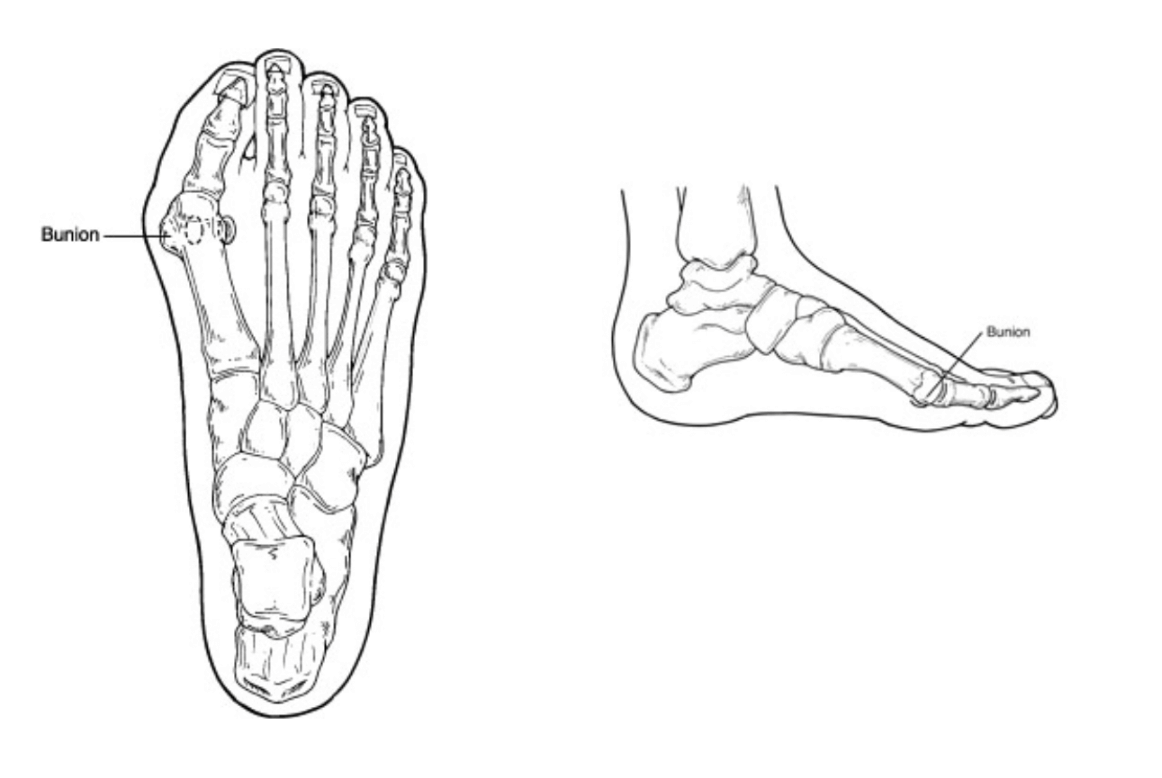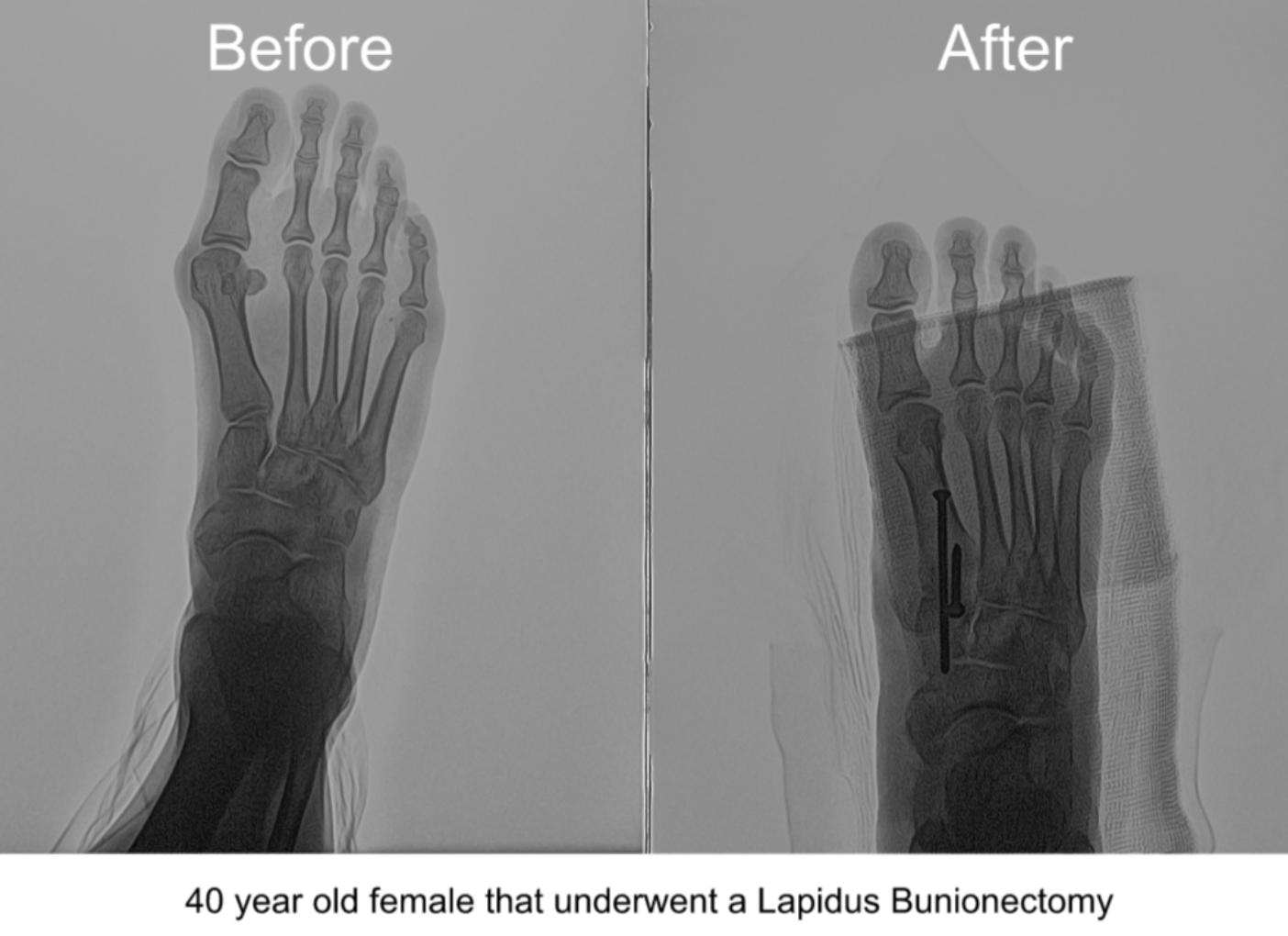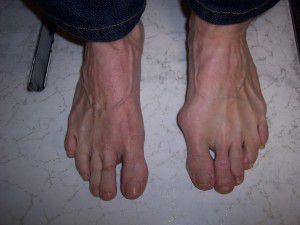bunion
Displaying items by tag: bunion
Dr. Brandon Nelson Discusses the Best Bunion Surgery Options

Bunions can be quite painful and difficult to manage. Most patients experience pain along with the bunion itself. However quite a few patients can have foot pains in other locations secondary to the bunion. We see a lot of patients that have strapping, bracing and using shoe gear accommodations all to no avail. These are hard modalities to maintain and do not do anything to correct the bunion deformity. The only long-term solution to fix of bunion is surgical. However there are some other options that can alleviate the pain and slow the progression of the deformity.
The surgical procedures available for bunion correction usually can be characterized as a head or base procedures. Head procedures are done at the metatarsal head or towards the toes. Base procedures are done at the base of the metatarsal towards the metatarsal cuneiform joint. The type of procedure that is best for the bunion itself is correlated with a radiographic examination and physical examination foot, the other factors to consider are lifestyles and age of the patient. I recommend anybody evaluating bunion surgery to make an appointment to be evaluated and make sure you have the best possible outcome.
Dr. Nelson Discusses When to Have Bunion Surgery

The most common surgical procedure I perform by far is a bunionectomy. The bunionectomy procedure itself can be very rewarding for patients and physicians like. Often times patients come in with a significant amount of foot pain and a history of multiple conservative modalities have been attempted all to no avail. These people are obviously good candidates for surgical correction. Additionally I see a lot of patients that are currently not in pain however have a hard time fitting shoe gear or have a large bunion a family history of bunion deformities.
Surgical intervention is often warranted for patients that have a family history of bunion deformities or have a hard time fitting in shoes. A few patients come in with a large bunion that doesn’t have pain. Initially it is important to evaluate the patient from a clinical standpoint and radiographic standpoint. Often times on the x-ray we’ll see the beginning of arthritis and correcting the bony can help reduce the chance of long-term arthritic changes. I recommend patients that have a bunion to release be evaluated. That way we can at least implement conservative measures.
Dr. Brandon Nelson Discusses How To Make Sure You Have The Correct Bunion Surgery

Issaquah Foot and Ankle Specialists has been performing bunion surgery for more than 20 years and have performed thousands of bunionectomies. Having performed so many bunion procedures has allowed us to perfect our skills and provide patients with the most up-to-date bunion procedures. Currently there are almost 50 different bunion procedures that can be performed. However, the majority of these procedures are divided into 3 categories;
1. fusion or arthrodesis
2. head procedures
3. base procedures
It is important to note that not everyone is a candidate for one of these procedures. I can tell you it is important to have the entire foot structure evaluated as well as having x-rays done. I continue to get a lot of second opinions in my office due to the fact that I do perform so many bunionectomies. I do really enjoy discussing bunions and bunion procedures with patients in providing him with answers further questions and help with their feet. If you’re suffering from a bunion and are contemplating conservative care or surgical care consider making an appointment with us today.
Dr. Brandon Nelson Discusses Why We Have the Best Options for Pain Control After Bunion Surgery

Bunion surgery provides great outcomes for patients that want relief from foot pain. Foot pain associated with a bunion can be very difficult to manage from a conservative standpoint. A lot of patients have tried getting bigger or wider shoes, which can create more room for the bunion to grow and make the situation worse. Patients will also apply pads, straps, splints or tape to the feet. This can be time consuming and cumbersome and again does nothing to fix or reverse the cause of bunions. The only way to actually fix the bunion is surgically. Bunion surgery has come a long way there are now new techniques we utilize to decrease down times and post-operative pain.
New techniques offer shorter recoveries and quicker returns to activity. Pain control can be challenging for both patients and physicians that are not as familiar as we are with modern techniques and medications. We use a long acting anesthetic to make the foot numb and prescribe different medications based on each individual patient and procedure performed. We have taken years to perfect our pain control regime and find the majority of our patient’s rate their pain as being well controlled. If you are contemplating bunion surgery come see us. With our pain control regime, onsite surgical center and years of experience this will create the best possible experience for you.
If you have bunion pain, give us a call today at 425-391-8666 or make an appointment online.
Dr. Brandon Nelson Discusses What Causes a Bunion and How To Fix it Once and For All

Some patients begin to notice a bump that is developing on the inside of their foot. They start to get pain with walking and exercise and they wonder what is happening. Often a patient will visit the shoe store or seek advice from nonmedical personnel as to what it is. It is important when been dealing with medical issues to seek the advice of someone who has had years of training and experience in that particular field. Your foot and ankle health is essential for long-term well-being of your overall general health. Bunions are the most common cause of pain and irritation around the big toe joint. The bunion is a bony deformity that often appears as a protuberance around the joint.
The majority of bunion deformities are an inherited foot structure. Patients can often trace to other relatives that have similar foot conditions. The pathology itself continues to progress with time and there is no conservative measures that reduce or correct the deformity. It is important to understand that conservative measures can sometimes help alleviate pain and increase overall functional performance. However, the bunion can only be fixed surgically. The surgical procedures depend on the patient’s overall foot structure, degree of deformity and activity levels. All bunion deformities that require surgical correction are done in the office and no longer require any hospitalization. All bunion procedures that we perform at Issaquah Foot and Ankle Specialists allow patients to be weight bearing and do not require prolonged periods using crutches or knee scooters. If you have a bunion deformity and would like to have it evaluated for either conservative or surgical measures please give us a call at 425-391-8666 or make an appointment online today.
- bunion
- bunion surgery
- bunion treatments
- bunion surgery issaquah
- bunion surgery seattle
- bunion surgery bellevue
- bunion doctor issaquah
- bunion doctor bellevue
- bunion doctor seattle
- bunion doctor
- podiatrist issaquah
- issaquah podiatrist
- issaquah foot and ankle specialists
- dr brandon nelson
- dr timothy young
Dr. Brandon Nelson Discusses Treating Bunions Without Surgery

Treating bunions without surgery can be fairly challenging for patients that currently have pain or difficulty fitting shoe gear. Bunions or bone deformity can be inherited from your mom or dad. It is not uncommon for bunions to begin early in adolescence and continuing to develop into adulthood. Patients are often interested in conservative measures that are available to help with bunion pain. It is important to note that there are no conservative measures that are going to fix your bunion deformity.
Quite a few patients come in with all sorts of strapping devices and splinting devices from the Internet. None of these tools fixture bunion or change the shape of your bunion as this deformity is a malalignment of a joint and bone. However, it should be noted that we have many options for people that are having bunion pain and do not want to have surgery performed. The most important issues to address are the mechanical instability and the joint pain. Often times stabilize the foot structure can significantly helped slow the deformity and reduce the pain. There are many options for the arthritic joint that can provide long-term relief. In office evaluation and x-ray are central to recognizing what type of bunion is developing how to best rectify the pain. At Issaquah Foot and Ankle Specialists we have seen thousands of bunions and have many different options available to save the patient’s lifestyle. Please give us a call at 425-391-8666 or make an appointment online if you have bunion pain.
- bunion
- bunion pain
- bunion no surgery
- bunion treatment
- bunion doctor issaquah
- bunion doctor bellevue
- bunion doctor seattle
- bunion doctor mercer island
- bunion specialist
- bunion specialist issaquah
- bunion specialist bellevue
- dr brandon nelson
- dr timothy young
- issaquah podiatrist
- issaquah foot and ankle specialists
- best foot doc
Dr. Nelson Discusses the Best Correction Techniques for Surgery on Bunions, Tailor's Bunions

Bunions and tailor’s bunion can be quite painful. Often times we see hammertoes associated with tailor’s bunions on the outside of the foot or on the inside of the foot. Bunion pain especially bunion pain of the big toe can be extremely difficult for patients that are active. We get a lot of questions for what is the best bunion correction that can be performed utilizing surgical techniques. We also get a lot of questions regarding minimally invasive type bunion procedures. The most important part of bunion surgery is having your bunion evaluated.
I highly recommend meeting your surgeon in person and have them evaluate your foot both clinically and radiographically. X-rays are paramount as well as the clinical exam to see what is causing the bunion deformity and what is the best correction method to be applied. There are many different types of bunion surgeries from what we call head procedures or procedures performed at the distal aspect of the first metatarsal or base procedures which are procedures performed at the proximal aspect. The recovery and the long-term reduction of the deformity can be correlated to type of bunion procedure that is done as well as a factors contributing to the bunion. Every bunion procedure we perform the patient can walk on the foot after the procedure and all of them are done in the office to save both time and money.
If you have tried bunion pads and other bunion relief options give us a call and we’ll help you fix your bunion. Give us a call at 425-391-8666 or make an apointment online today. Myself (Dr. Brandon Nelson) or my partner Dr. Timothy Young would love to see you.
Dr. Timothy Young Talks About Anesthesia and Bunion Surgery

Dr. Timothy Young Talks About Anesthesia and Bunion Surgery



